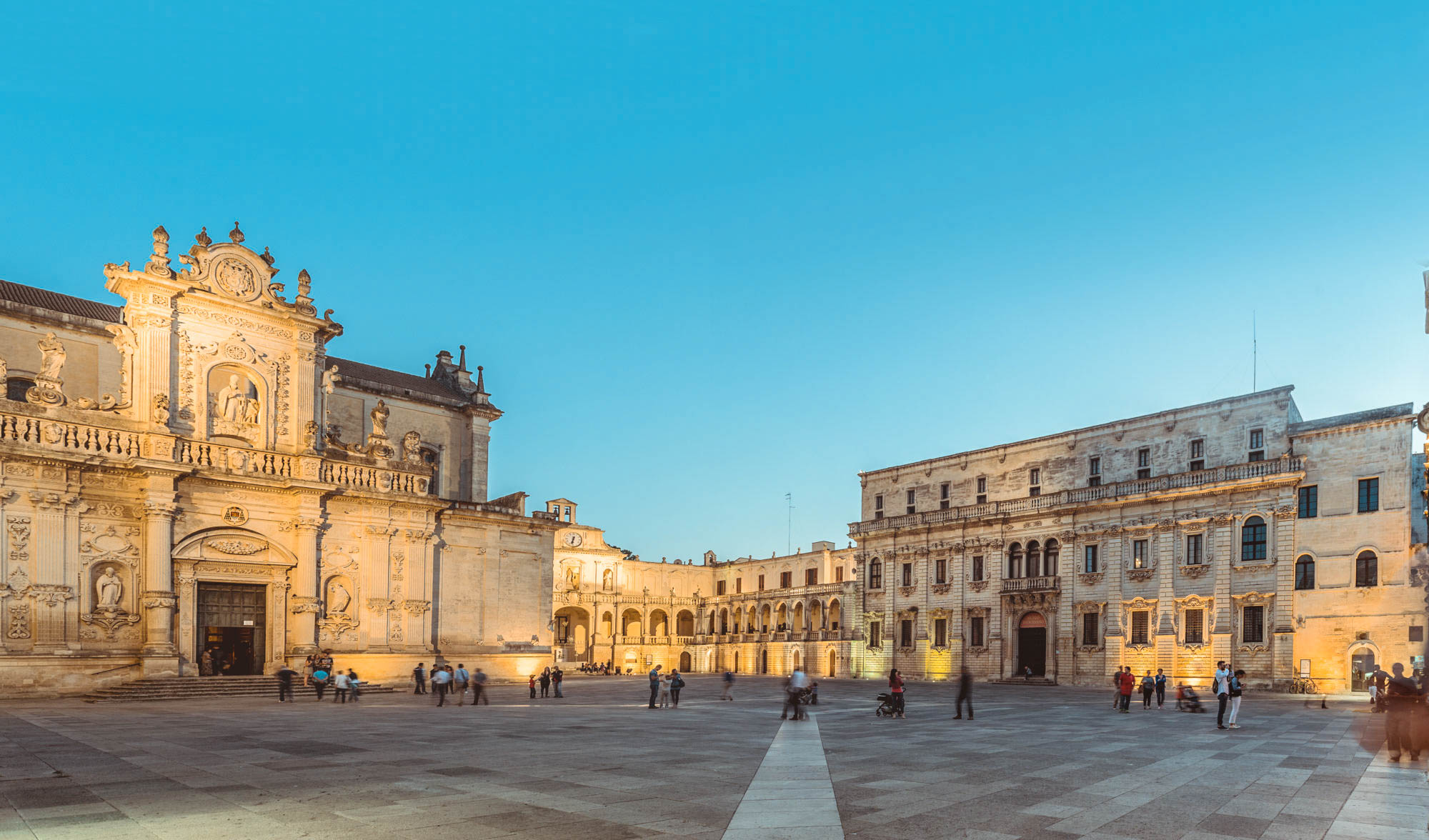

Lecce
Duration: 3 hours
Capital of the province of the same name and cultural hub of Salento, Lecce, in Puglia, is one of the most beautiful cities of art in Southern Italy. Known as “the Florence of the South”, Lecce knows how to amaze and fascinate tourists and visitors. Its very ancient Messapian origins and the archaeological remains of the Roman domination are in fact mixed with the richness and exuberance of the typically seventeenth-century Baroque of the churches and palaces of the center.
The architectural development and decorative enrichment of the facades was particularly fruitful during the Kingdom of Naples and characterized the Apulian capital in such an original way as to give rise to the definition of “Lecce Baroque”. A completely new style also for the use of Lecce stone, a type of calcareous material, easily modeled and with warm colors.
The streets of the center of Lecce are an open-air museum. An example of this is the splendid Piazza del Duomo, which houses the Duomo or Cathedral of Maria SS. Assunta – with a bell tower and two facades, one very sober and the other richly decorated – the Bishop’s palace, from the Renaissance period, with its splendid loggia, and the Palazzo del Seminario, for the rusticated facade and the characteristic internal cloister.
Not far away, the famous square dedicated to the patron saint of the city, Piazza Sant’Oronzo, contains other artistic and historical jewels belonging to different eras. The Palazzo del Seggio, also known as the “Sedile”, dominates the square with its Renaissance elegance, now home to interesting exhibitions and shows. The church of Santa Maria delle Grazie is of the same architectural style, while the majestic elliptical amphitheater and the Roman column, with the bronze statue of the patron saint next to it, are evidence of Roman domination.
Explaining in words the charm and beauty of one of the most beautiful cities in Puglia is a difficult task, the best way to find out is by getting lost in its historic center, a labyrinth with hundreds of alleys and narrow streets overlooked by baroque palaces, balconies, flowery courtyards and churches.
